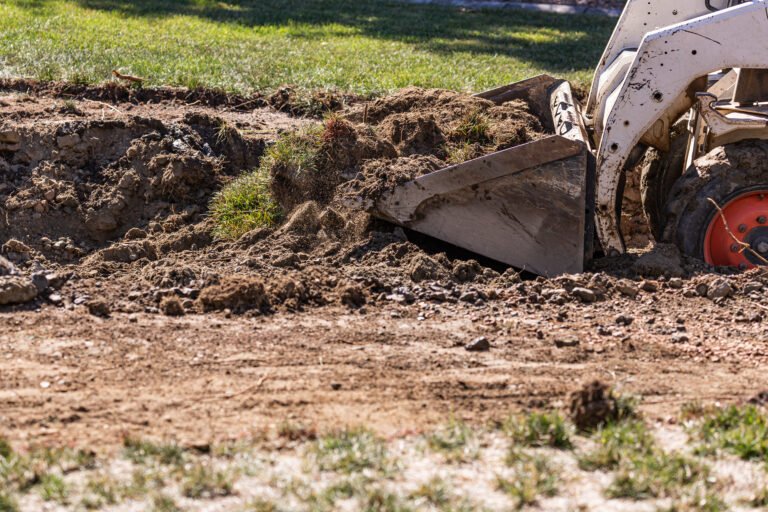The Psychology of Space: Demolition Project Preparation Guide
The psychology of space is a vital aspect to consider when embarking on a demolition project. As humans, we often form deep connections and emotions towards our physical environment, especially when it comes to spaces where memories and significant events have taken place. Therefore, understanding the psychology behind these connections is crucial in preparing for a successful and well-thought-out demolition project.
Demolition requires not only logistical preparation but also addressing the psychological needs of those affected by the changes in their environment. This includes clients, residents, or workers involved, ensuring that they are involved in the process and can adapt to the upcoming transformation. Acknowledging these needs and giving people the necessary support can help smoothen the transition, making the demolition process much less distressing.
In order to approach a demolition project with confidence, careful consideration must be placed in balancing the psychological and practical aspects of preparation. Understanding people’s attachment to space, as well as their needs and expectations, can effectively bridge the gap between the emotional and technical demands of a demolition project. This thoughtful approach ensures all facets of the process are addressed, ultimately leading to a successful and satisfying outcome.
Planning and Preparation
Understanding the Scope
Before starting a demolition project, it is essential to plan and understand the scope of the project. This includes identifying the size, timeline, and materials involved in the demolition process. A thorough inspection of the site should be conducted by a qualified contractor or engineer to determine any potential hazards.
Below is a simple table highlighting key aspects to consider:
| Aspect | Considerations |
|---|---|
| Size | Area and building dimensions, volume of debris expected |
| Timeline | Estimated project duration, deadlines, necessary permit acquisition timeframe |
| Materials | Types of materials used in the building, recyclable materials, hazardous waste |
Safety and Hazard Assessment
Safety is a paramount concern in any demolition project. The health and well-being of all involved individuals should be taken into account. A well-rounded safety assessment incorporates the following aspects:
- Identifying potential hazards
- Creating mitigation plans for each hazard
- Ensuring proper safety equipment is available
During this stage, it is crucial to have a thorough inspection to detect any hazardous materials such as lead paint or asbestos. Proper permits from your local regulatory agency must be obtained to ensure compliance with health and safety regulations.
Community Engagement and Communication
Engaging with the community and maintaining open lines of communication with neighbors and homeowners is a vital aspect of a successful demolition project. This includes:
- Informing neighbors of the demolition project’s timeline
- Addressing any concerns in a timely manner
- Keeping relevant parties updated on project progress
- Minimizing disruption to daily routines of the community as much as possible
Effective communication contributes to fostering a sense of understanding, cooperation, and goodwill throughout the project. It is crucial to strike a balance between accomplishing project goals and minimizing inconvenience for the community during the planning and preparation stages of a demolition project.
Executing the Demolition
Key Demolition Techniques
There are several key techniques employed in a successful demolition project. These include dismantling, which involves manually removing parts of a structure; implosion, where explosive charges are strategically placed to cause the structure to collapse in a controlled manner; and the use of heavy machinery such as shears and excavators to break apart the structure.
| Technique | Description |
|---|---|
| Dismantling | Manual removal of parts of the structure |
| Implosion | Use of strategic explosives to cause the structure to collapse |
| Heavy Machinery | Heavy equipment, like shears and excavators, are used to break apart the structure |
Safety is crucial in successfully executing these techniques. Clear communication among team members and wearing appropriate personal protective equipment (PPE) are essential to avoid accidents and injuries during the demolition process.
Dealing with Debris and Dust
Managing debris and dust is an important aspect of any demolition project. The following steps help to mitigate their effects:
- Protection: Employ dust control and suppression methods, such as wetting down the work area or using air filtration systems.
- Hazardous materials: Ensure that any hazardous materials, including asbestos, are identified and safely removed before commencing demolition.
- Dust control: Employ proper cleaning and sweeping methods, as well as wearing appropriate dust masks, to reduce inhalation and the spread of airborne particles.
Utilizing a dumpster for debris storage and disposal helps to maintain a clean work environment and provides an efficient method for on-site debris management.
Final Cleanup and Inspection
Once the demolition is complete, it’s imperative to have a final cleanup and inspection phase. This involves:
- Removing any remaining debris from the site, including leftover building materials and rubble.
- Ensuring that hazardous materials have been properly disposed of according to local regulations.
- Conducting a thorough walk-through of the site to verify that all structural elements have been demolished to the required level and that no safety hazards remain.
By observing these practices, a successful demolition can be executed safely and effectively, paving the way for new development and opportunities on the site.
Psychological Aspects of Space in Demolition
Demolition projects inherently involve changing the space and environment in which people live and work. The impact of these changes on individuals’ psychology can be significant, affecting both their mental well-being and performance. In this section, we will discuss the impact on labor and homeowners and explore strategies to mitigate stress and enhance well-being during demolition projects.
Impact on Labor and Homeowners
Space psychology plays a crucial role in the mental health of individuals, influencing their mood, behavior, and social interactions. Demolition projects often disrupt familiar spaces, causing a range of emotional responses.
For laborers working on demolition projects, the altered work environment can lead to different stressors, affecting their performance and well-being. These may include:
- Cognitive: Reduced spatial awareness, potential for accidents or injuries
- Behavioral: Increased irritability, changes in work habits
- Emotional: Feelings of loss or discomfort in the altered space
- Social: Disruption of team dynamics and communication
On the other hand, homeowners whose properties are being demolished may experience emotional distress due to:
- Nostalgia: Attachment to a space that holds memories
- Uncertainty: Concerns over the outcome of the project
- Loss of control: Inability to influence the demolition process
Mitigating Stress and Enhancing Well-being
To maintain mental health and well-being throughout a demolition project, it is essential to address the psychological impact of the altered space. Some strategies include:
- Clear communication: Provide detailed information about the project’s progress, addressing concerns and maintaining transparency.
- Support networks: Encourage laborers and homeowners to lean on social support systems, benefiting from interpersonal connections.
- Mental breaks: Allow for frequent breaks and relaxation moments to mitigate stress and prevent burnout.
- Well-being initiatives: Implement mindfulness practices or stress-management workshops to enhance overall mental health.
Incorporating these strategies into the demolition project design can help alleviate stressors and promote a positive experience for all parties involved. By understanding the psychology of space and its impact on individuals, we can better support laborers and homeowners during the demolition process.







